Medical Engineering
Medical Imaging
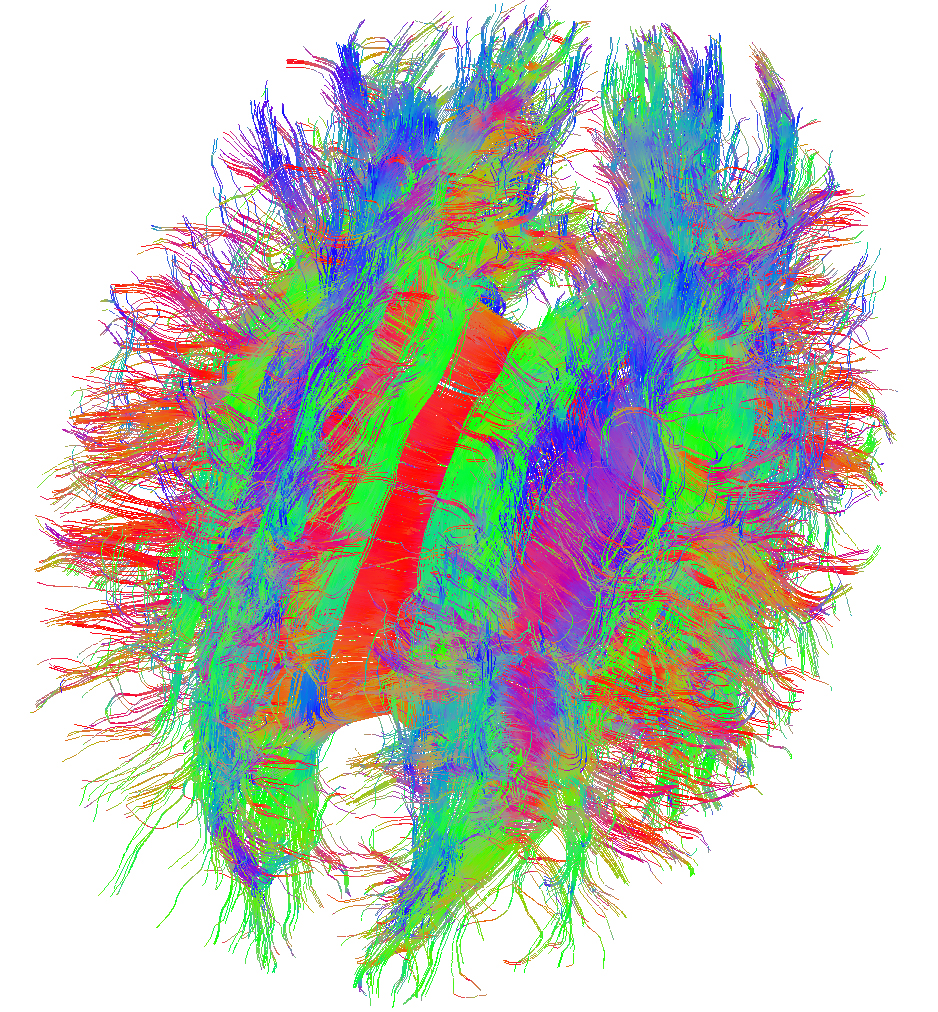 Fiber tracking in the brain using diffusion-weighted magnetic
Fiber tracking in the brain using diffusion-weighted magnetic
resonance tomography
Modern image processing has revolutionized research, diagnosis and therapy in medicine. Mathematics enables interpretable images to be created from the raw data of the instruments, while simplifying or even enabling their evaluation.
Matheon makes excellent contributions here in cooperation with partners from medical research.
The central problems involved are image reconstruction, aggregation of the image information as well as statistical analysis of the image data.
New algorithms from Matheon primarily aim to improve the image properties with respect to signal/noise ratio while maintaining maximum structure retention, as well as an efficient automatic extraction of characteristics from the raw data.
Optimal conditions for medical diagnosis and therapy are thus created thanks to the development and use of innovative strategies for adaptive smoothing and with maximum utilization of the specifics of the imaging method (fMRI, DTI, CT, PET etc.).
Virtual patients
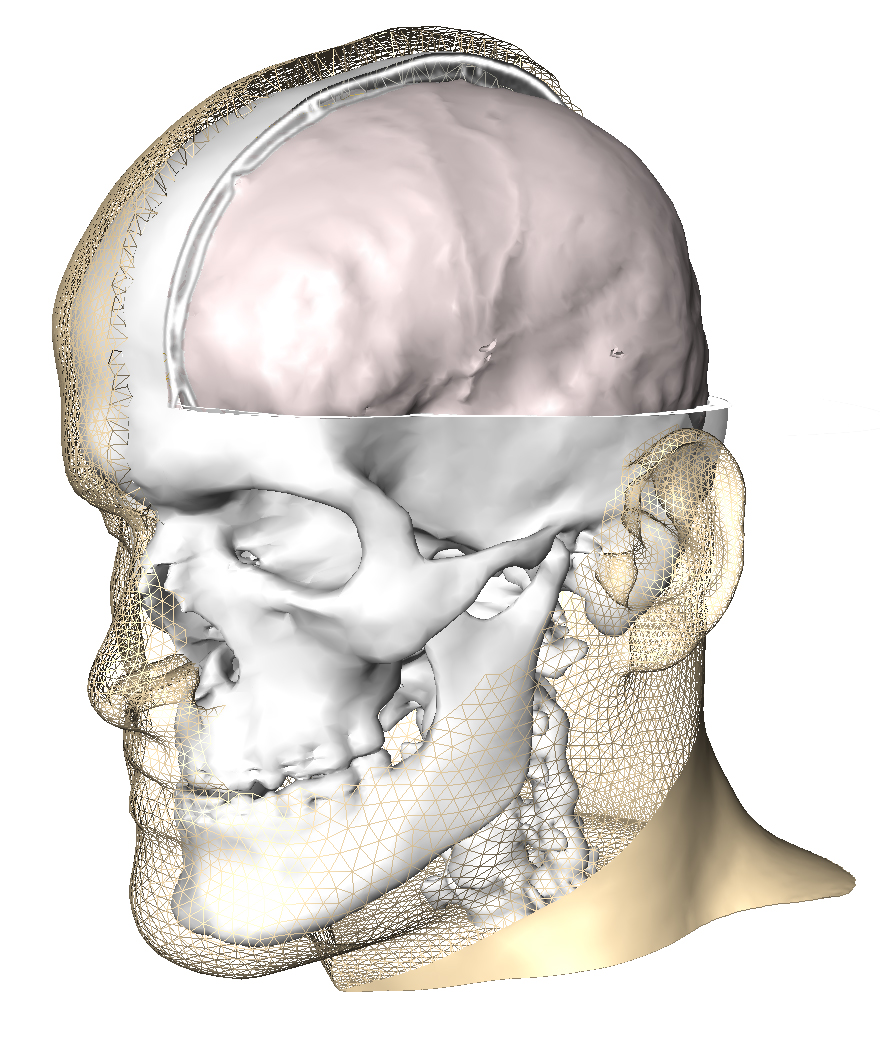 Virtual patient: 3D planning model for cranio-maxillofacial surgery
A quantitatively reliable estimation of the therapeutic result is essential for the development and application of modern forms of therapy. Matheon supports this by designing virtual patients to
represent the geometry of anatomical structures and enable physical and physiological processes to be simulated.
Virtual patient: 3D planning model for cranio-maxillofacial surgery
A quantitatively reliable estimation of the therapeutic result is essential for the development and application of modern forms of therapy. Matheon supports this by designing virtual patients to
represent the geometry of anatomical structures and enable physical and physiological processes to be simulated.
To obtain the geometry from medical image data, atlas-based segmentation methods are developed at Matheon, which utilize statistical shape parameters, and thus can do without manual interventions.
These algorithms are currently world leading and have received multiple international awards.
The mechanical strain on joints is a crucial factor in fracture healing or the abrasion of joint implants, for example. Matheon develops fast algorithms to reliably calculate the forces that occur,
not only in stationary cases, but also for more complex movements.
The examination of metabolic diseases calls for a system-biological understanding of the processes in the organism on different levels. Based on experimental data,
Matheon develops mathematical models that allow for quantitative and mechanistic predictions on complex life processes and therapy approaches.
Individual therapy optimization
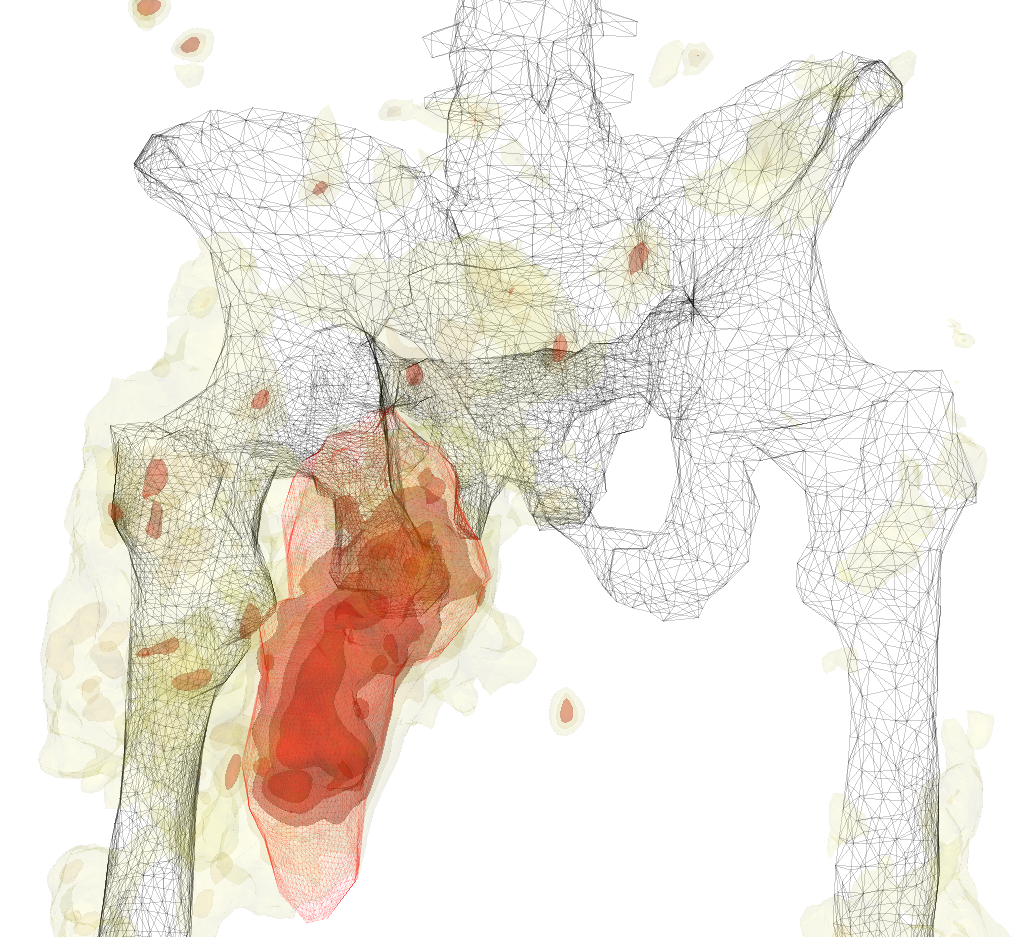 Optimized temperature distribution in hyperthermia
Difficult and complex therapies must be optimized specific to the patient for the best possible success. However, manual planning frequently leads to unsatisfactory results when there are diverse variation options and complex interactions.
At Matheon, specialized optimization algorithms are developed, which suggest optimum therapy parameters based on individual patient models.
Optimized temperature distribution in hyperthermia
Difficult and complex therapies must be optimized specific to the patient for the best possible success. However, manual planning frequently leads to unsatisfactory results when there are diverse variation options and complex interactions.
At Matheon, specialized optimization algorithms are developed, which suggest optimum therapy parameters based on individual patient models.
The success of regional hyperthermia, for example, critically depends on ensuring an optimum temperature distribution in the patient's body.
Here the thermal energy is absorbed by the body from an interference field of radio waves. Special algorithms have been developed to determine the amplitudes and relative phases of the antennas required for an optimal temperature distribution.
During surgical reconstruction of osseous facial structures, the shaping of the implants essentially determines the visual appearance of the patient. Based on a specified facial shape, scientists at Matheon calculate the optimal shape of the implants.
Interactive visualization
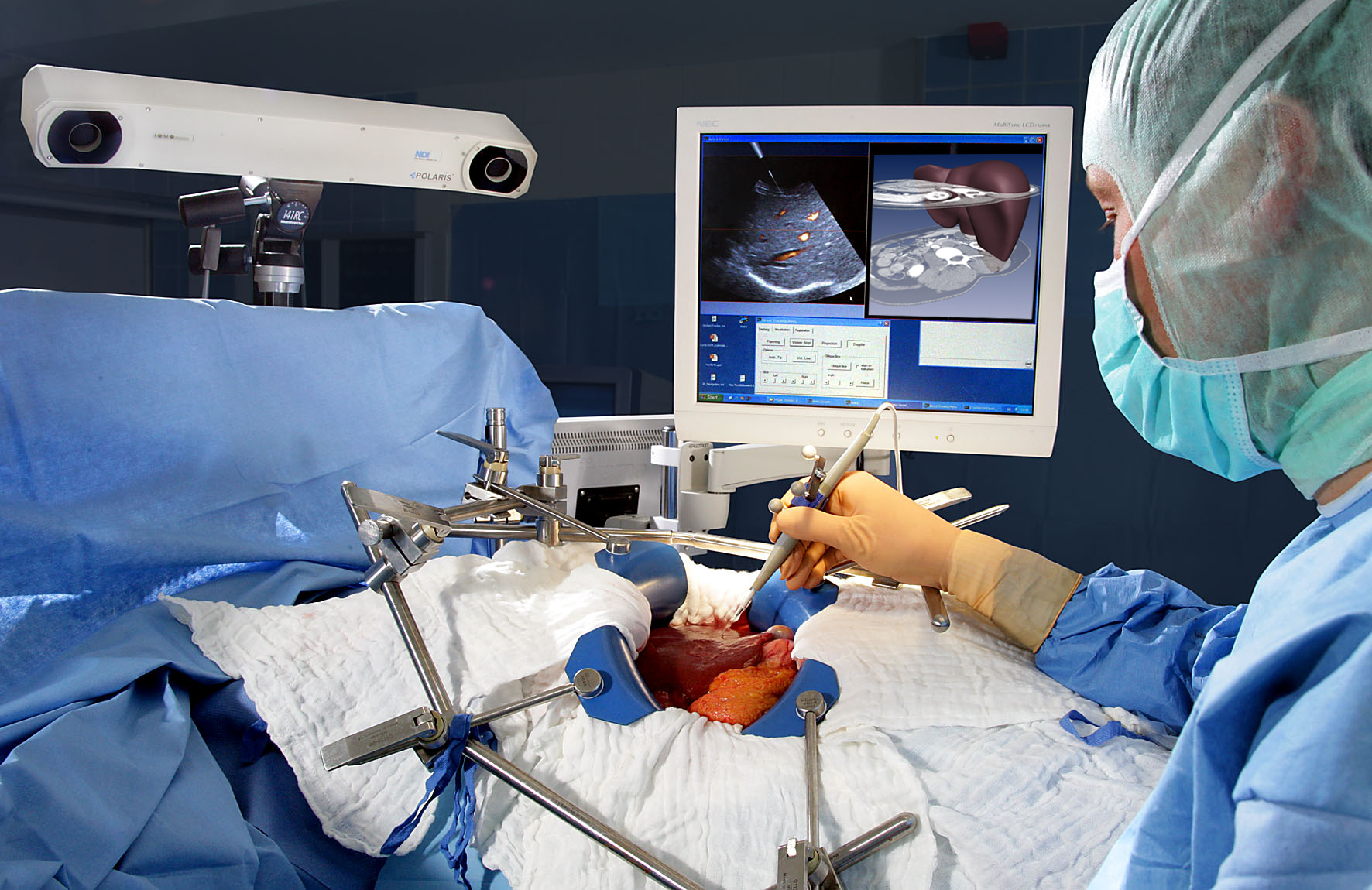 Interactive visualization in combination with innovative user
Interactive visualization in combination with innovative user
interfaces allow the surgeon to implement planning specifications
intra-operatively
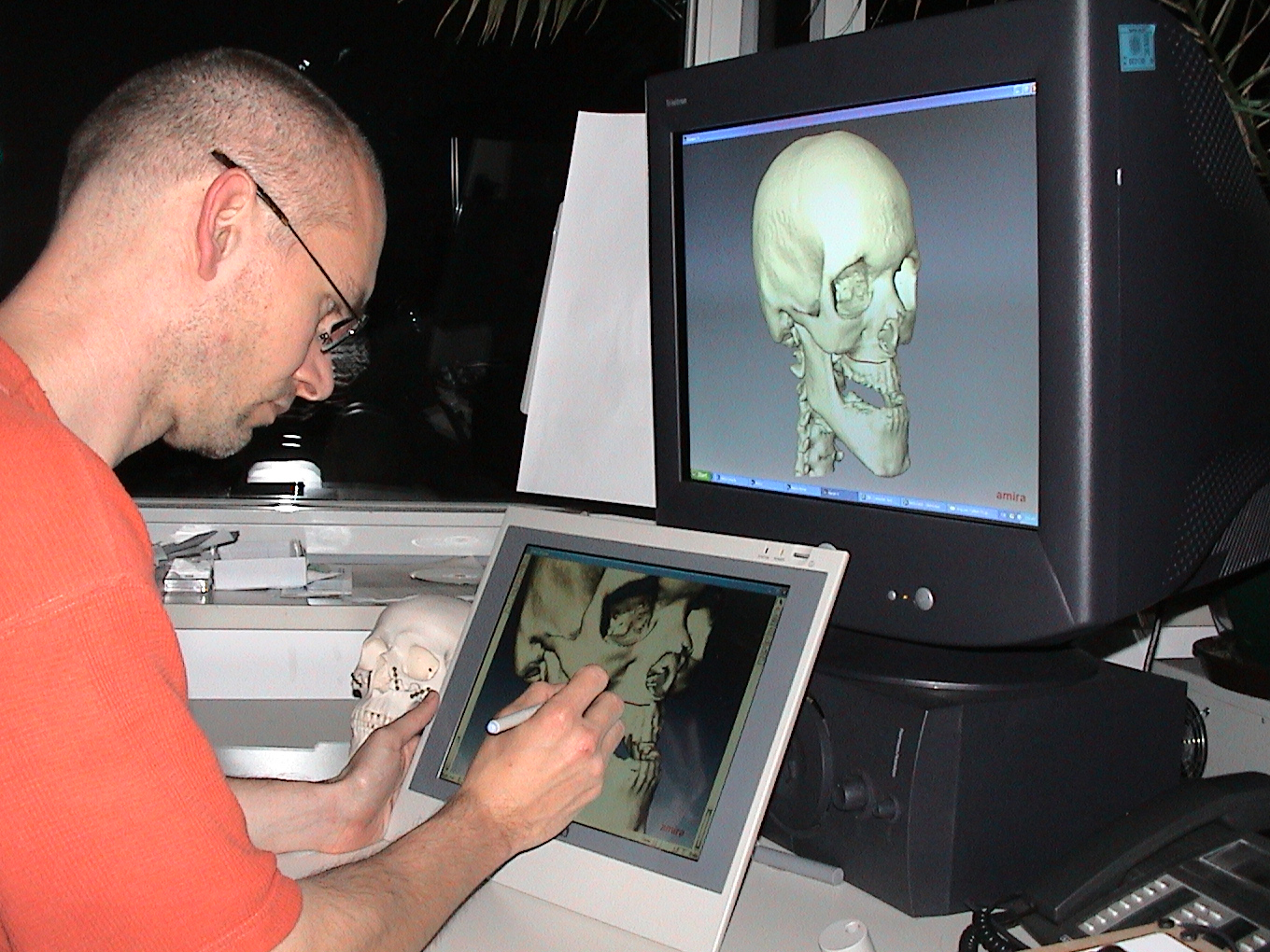 Surgical bone cut planning on the virtual patient
Surgical bone cut planning on the virtual patient
In order for the methods described here - from imaging and patient modeling through to simulation - to be used in the clinic, intuitively controllable work environments are needed.
All work steps must be able to be performed with visual control and as interactively as possible in these software environments.
Building on the Amira software developed at the ZIB, such work environments are tailored to various applications. This involves using state-of-the-art methods of computer-graphic visualization and design of interaction interfaces.
References
We have already implemented successful projects for various practice-relevant subjects with a range of prominent companies in the medical engineering sector and areas directly related. A selection can be found here:
- 1000shapes GmbH, Berlin
- Bernstein Center for Computational Neuroscience (BCCN) Berlin
- Charité - Universitätsmedizin Berlin
- Karolinska Institutet, Stockholm (SE)
- Hannover Medical School MHH
- Medical University of Vienna (AT)
- Istituto Ortopedica Rizzoli di Bologna (IT)
- Pfizer Inc. Research & Development, Sandwich (UK)
- Philips Research Hamburg
- Stryker Osteosynthesis, Freiburg
- Stryker Trauma, Kiel
- Universitätsklinikum Köln
- Universitätsklinikum Münster
- Universitätsspital Basel (CH)
- Visage Imaging GmbH, Berlin
Make the most of our expertise for a more efficient route to innovation!




